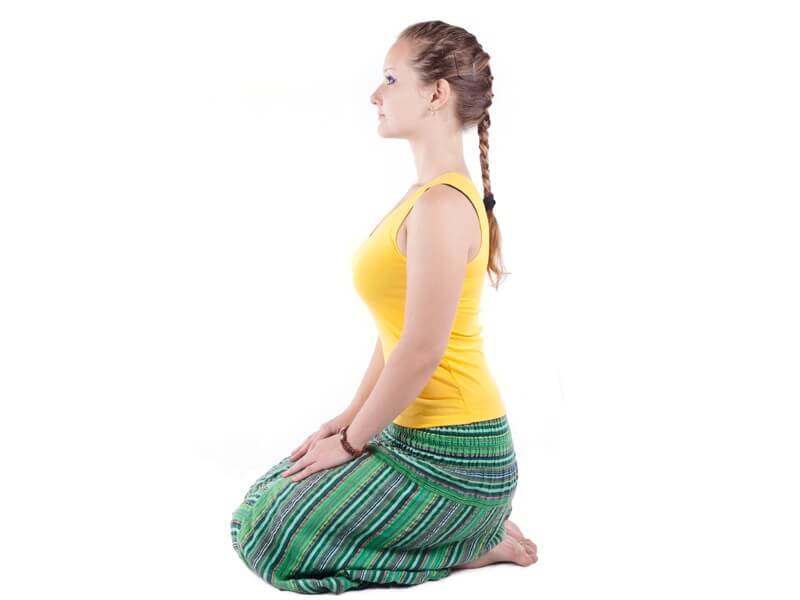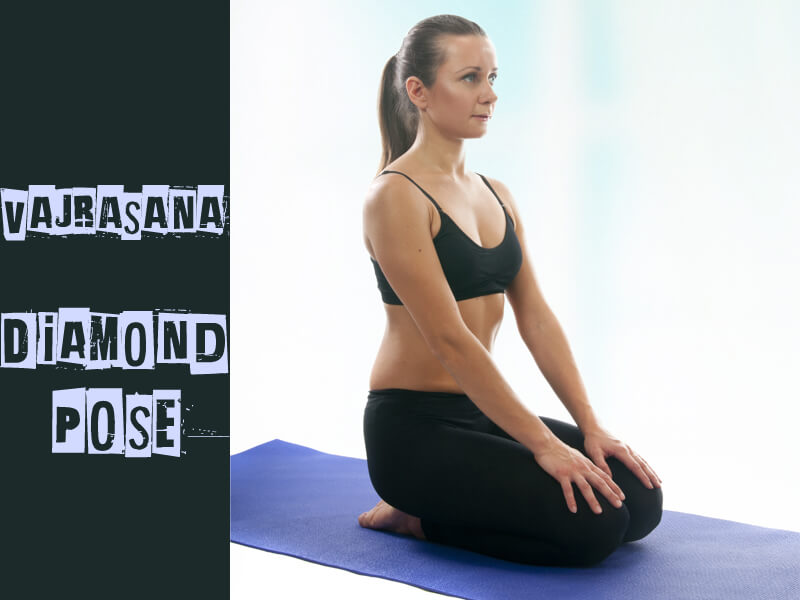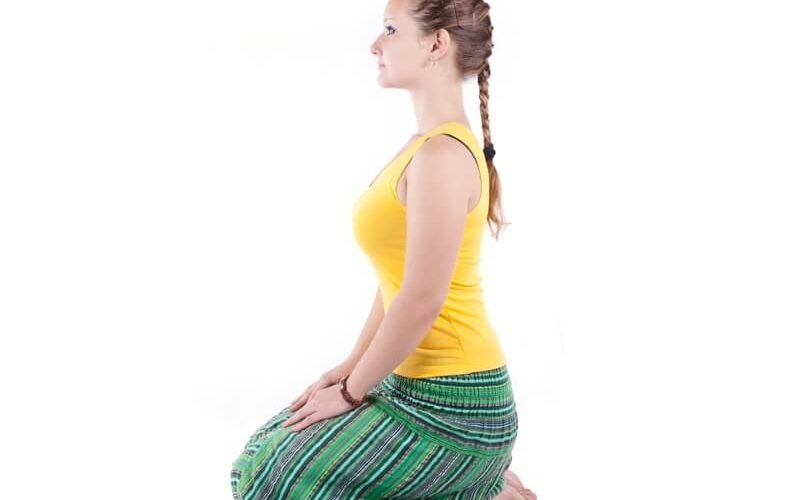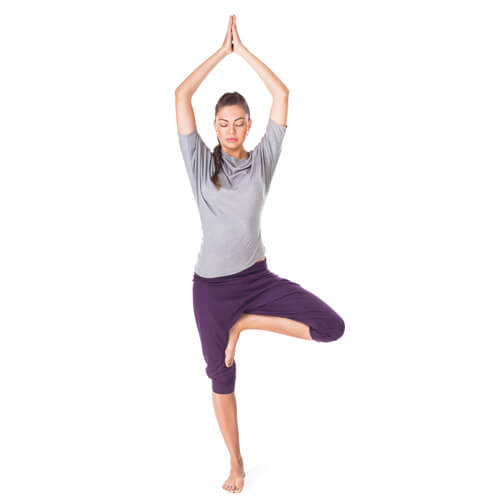The popularity of yoga has been on the rise globally because of all the benefits it offers. Though all the asanas are equally important, Vajrasana helps make it one of the most popular and unique poses. That is because Vajrasana is one of the asanas you can practice after a meal. The culmination of the two Sanskrit words, Vajra and asana, forms Vajrasana. As per Hindu mythology, Vajra refers to Lord Indra’s mythical weapon, the thunderbolt, which symbolizes indestructibility and strength. In other words, Vajrasana calms the mind while strengthening your body.
There are 52 different ways to do Vajrasana. It is important to pick the variation that fits your flexibility. Vajrasana is also known as Kneeling pose, Diamond pose, Thunderbolt pose, Adamantine pose, and Pelvic pose.
This article talks about the advantages of Vajrasana, how to do the pose, and other related information. Keep reading to learn more!

Image source: Shutterstock
Steps To Do Vajrasana
- Get on your yoga mat and bend your legs back while keeping your lower legs together. Make sure your heels and big toes are close together.
- If your ankles are stiff, you can put a rolled-up towel under the arch of your foot for extra support.
- Slowly lower yourself so your thighs are on your calves and your bottom is on your heels.
- Look ahead and keep your head up. Put your hands on your knees.
- Pay close attention to the way you take in and breathe out air.
- Saying “OM” can help to relax and focus your mind.
- Stay in this position for around 5 to 10 minutes.
How long should you stay in Vajrasana (Diamond Pose)?
If you’re just starting out, try holding the Vajrasana pose for 3 to 4 minutes. As you get better, you can do it for longer, up to 10 minutes. It’s best to do this yoga pose with an empty stomach, like after lunch or dinner. If you’re feeling comfortable and strong, you can even do it for up to 20 minutes.
Benefits of Vajrasana
Vajrasana has many health benefits, but it is important to do it regularly. To get the most out of this yoga pose, take slow breaths while doing it.
Improves Blood Circulation
The Vajrasana pose improves the blood flow in the pelvic region specifically. However, it also helps regulate blood flow to the entire body when combined with proper breathing.
Improves Posture
It is important to keep your back straight when doing Vajrasana. Having a good posture will help your body get the most out of the pose.
Boost Digestion
Performing Vajrasaba helps improve bowel movements and relieves constipation by increasing blood flow in the stomach while obstructing blood flow to the thighs and legs. You can also eliminate acidity and flatulence and ensure your body absorbs nutrients efficiently by practicing Vajrasana. In addition, since it helps with digestion, it is good to perform Vajrasana after meals.
Cure Back Pain
Vajrasana provides relief from occasional pain and discomfort by strengthening your back muscles. You can enhance your lower back and relieve pain caused by sciatica by practicing this pose regularly.
Gives Strength to Pelvic Floor Muscles
Vajrasana is a good way for women who are dealing with stress urinary incontinence to help them out. It increases the blood flow in the pelvic area and strengthens the muscles there too.
Keep Your Mind Calm
Vajrasana yoga has many advantages, such as enhancing focus and reducing tension. Additionally, it can help with managing worry and sadness whilst keeping your state of mind tranquil and serene thanks to the breathing exercises it involves.
Improves Sleep
Doing Vajrasana can help you sleep better because it can reduce your stress and worries, allowing your mind to stay peaceful.
Helps In Weight Loss
Doing Vajrasana after eating can help you lose weight because it increases the flow of blood to your stomach, which helps digestion.
Give Relief to Menstrual Cramps
Vajrasana can reduce the cramps that come with your period by increasing the amount of blood flowing to your pelvis.
Strengthens Sexual Organs
Vajrasana, also known as the thunderbolt pose, helps improve the health of reproductive organs in both men and women by increasing blood flow and strengthening the sexual organs, resulting in better sexual performance.
Vajrasana Contraindications
Here are some things to keep in mind while doing Vajrasana, even though it is a safe pose.
- Do not do this pose if you had knee surgery lately or have any knee issues.
- Pregnant women should not push on their stomachs. They should try to keep their legs slightly spread apart.
- When you do this pose, sit up straight, but be careful not to strain your lower back or arch too much.
- If you have a problem with your large or small intestine, such as an ulcer or hernia, try Vajarasana yoga with the help of a yoga teacher.
Vajrasana yoga is a great exercise to do after eating as it helps digestion and relieves constipation. However, not everyone can do it. This article will help you do it the right way and get all the benefits. Once you understand how to do it, you can even try more difficult poses that can help with other health issues. Let us know if this article was helpful!

Image source: Shutterstock
FAQ:
1. What do you need to be aware of before doing Vajrasana?
We all know that it’s good to do yoga on an empty stomach. Vajrasana is an exception though – it’s okay to do it even after a meal. Doing this pose helps with digestion after eating.
2. Which exercise is better, walking or Vajrasana??
Walking after meals keeps the energy diverted from digestion, which is why yoga practitioners suggest not walking after a meal. Instead, it is advised to let your body relax and redirect the energy for digestion by sitting in Vajrasana.
3. Can I do Kapalbhati while doing Vajrasana??
Yes! While you do Vajrasana while sitting, you can also do Kapalbhati. This will help keep your breathing system healthy and strong.
Read More:



